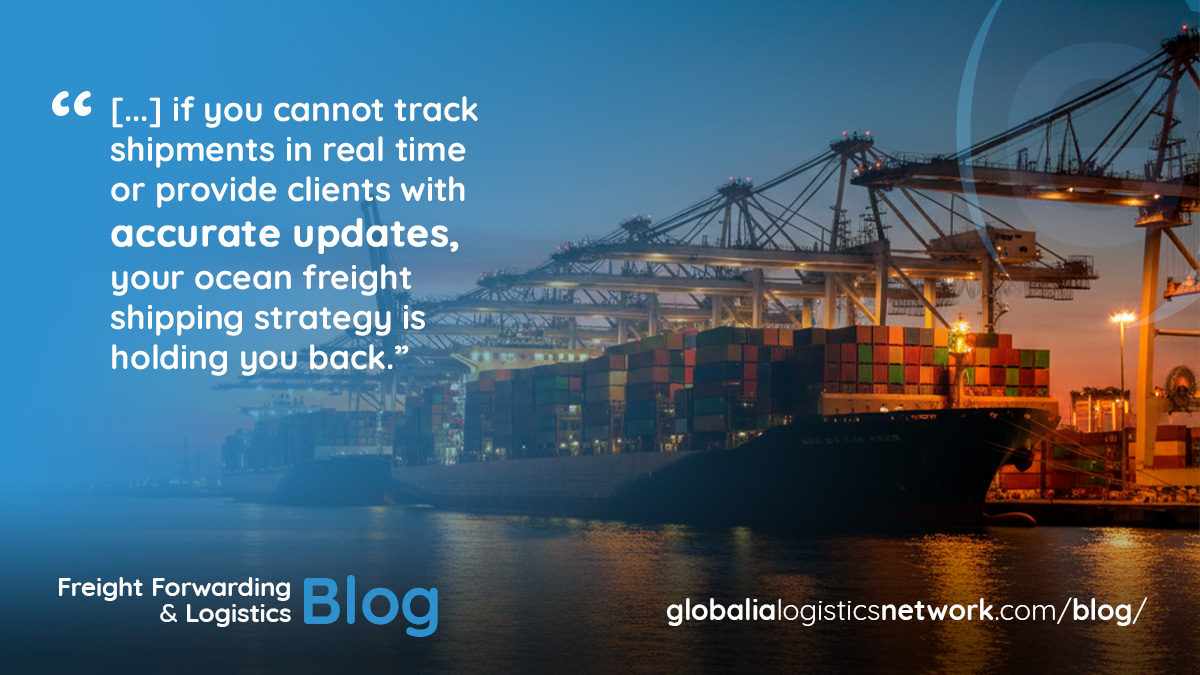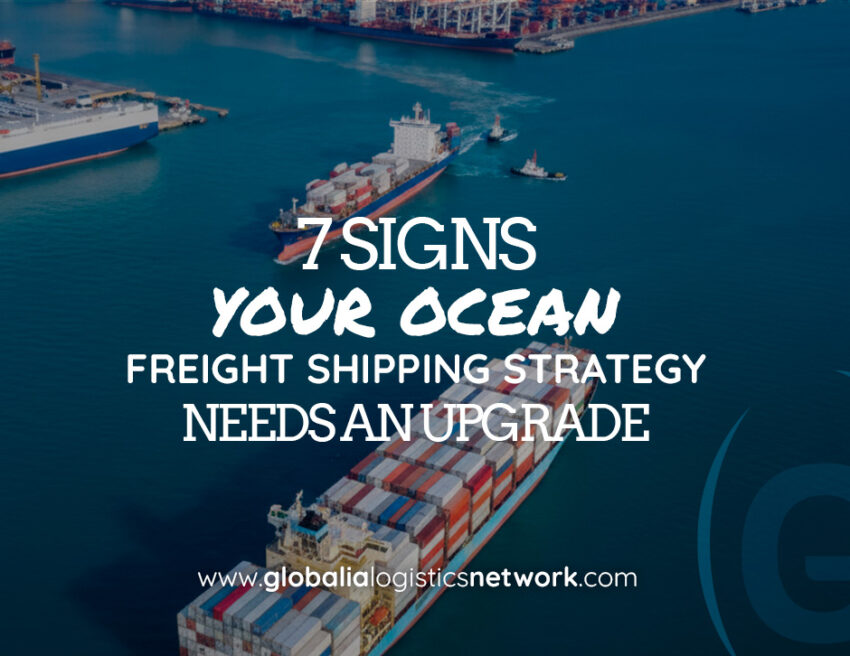Ocean freight shipping isn’t simply about moving containers anymore. With rising demand, unstable rates, port congestion, and tighter environmental rules, freight forwarders need to adapt fast and rethink their strategies to stay ahead. Ask yourself: Is your current approach delivering efficiency, reliability, and profitability? Or are you facing delays, high costs, or missed opportunities that could be avoided with a more strategic plan? If any of this resonates, it might be time to reassess your ocean freight shipping strategy. In this blog, we break down seven practical signs that indicate your strategy needs an upgrade and offer tips on how to address them.
1. Consistent Delays and Missed Schedules
If your shipments frequently arrive late or miss scheduled windows at ports, it’s a clear signal that your ocean freight shipping strategy may be outdated. Delays can stem from poor route planning, lack of contingency options, or inefficient coordination with carriers.
What to do: Start by analyzing your shipping routes and schedules. Are you using the fastest or most reliable carriers for your trade lanes? Consider alternative ports or routes that may reduce congestion and transit times. Implement tracking tools to monitor shipments in real time so you can react proactively to disruptions.

2. Rising Shipping Costs Without a Clear Explanation
Freight rates can fluctuate, but if you notice consistent increases in your ocean freight costs without an obvious reason, your strategy may be missing efficiency levers. Factors such as empty container repositioning fees, inefficient consolidation, and outdated contracts with carriers can silently erode margins.
What to do: Review your contracts, analyze your volume trends, and optimize load consolidation. Negotiate with multiple carriers to get competitive rates and explore digital freight platforms that provide transparency and automated rate comparisons.
3. Lack of Visibility Across the Supply Chain
If you cannot track shipments in real time or provide clients with accurate updates, your ocean freight shipping strategy is holding you back. Visibility is no longer a luxury—it’s a requirement. Customers expect real-time updates, and forwarders who can’t provide them risk losing trust.
What to do: Implement shipment tracking solutions or digital freight platforms that integrate with carriers. Providing real-time updates not only improves client satisfaction but also allows you to identify and resolve potential disruptions before they escalate.
4. Overdependence on a Single Carrier or Route
Relying on one carrier or a single shipping lane can be risky. Port congestion, labor strikes, or unforeseen events can halt your operations entirely. A robust ocean freight shipping strategy includes alternative options to ensure continuity.
What to do: Diversify your carrier partnerships and explore secondary routes. By having backup options in place, you can maintain reliable service even when primary channels face disruptions. Forward-thinking forwarders also leverage data analytics to predict high-risk periods and adjust carrier selection accordingly.
5. Poor Container Utilization
If your containers are often underloaded or improperly packed, you’re wasting space and money. Poor container utilization inflates shipping costs, increases handling time, and reduces overall efficiency.
What to do: Review your cargo planning and packing processes. Train staff in optimal container loading techniques and consider using software tools that calculate the best way to maximize container space. Better utilization reduces costs, improves turnaround, and supports a greener logistics footprint
6. Difficulty Meeting Sustainability Goals
Environmental regulations are increasingly shaping the shipping industry. If your current ocean freight shipping strategy does not account for carbon emissions, eco-friendly routing, or compliance with green logistics standards, you’re falling behind competitors who prioritize sustainability.
What to do: Measure your carbon footprint across trade lanes and explore low-emission carriers or alternative routes. Implement digital tools that help track fuel consumption and optimize container loads to reduce environmental impact. Sustainability is no longer optional; it’s a competitive advantage that also aligns with client expectations.
7. Reactive Instead of Proactive Planning
A strategy that only reacts to disruptions—like port congestion, customs delays, or cargo damage—is not sustainable. Freight forwarders need a proactive ocean freight shipping strategy that anticipates challenges and leverages data to make informed decisions.
What to do: Invest in forecasting tools and logistics analytics. Track historical shipment performance, port congestion patterns, and carrier reliability to predict potential issues. Proactive planning allows you to allocate resources efficiently, avoid bottlenecks, and maintain reliable service even in volatile conditions.
Practical Steps to Upgrade Your Ocean Freight Shipping Strategy
1. Embrace Digital Freight Platforms
Digital platforms allow forwarders to compare rates, track shipments, consolidate loads, and automate documentation. These tools increase efficiency without requiring heavy capital investment and provide real-time data to optimize decision-making.
2. Optimize Trade Lanes
Analyze your existing routes and identify opportunities for faster or more cost-effective alternatives. Consider secondary ports or multimodal transport to reduce reliance on congested routes.
3. Strengthen Carrier Partnerships
Diversifying carriers and building strong relationships ensures you have options during peak periods or disruptions. Regular reviews of carrier performance can help you identify the most reliable partners.
4. Train Staff on Best Practices
From container packing to digital tool usage, well-trained teams are critical for efficient operations. Continuous training ensures everyone is aligned with the upgraded strategy and can adapt to industry changes.
5. Monitor KPIs Continuously
Track metrics such as on-time delivery, transit times, container utilization, and cost per TEU. Monitoring KPIs allows you to identify inefficiencies quickly and adjust your strategy in real time.
6. Plan for Sustainability
Integrate carbon tracking, low-emission carriers, and eco-friendly operations into your strategy. Forwarders who prioritize sustainability can reduce costs, comply with regulations, and appeal to environmentally conscious clients.
Conclusion: Future-Proofing Your Freight Forwarding Business
The logistics industry is evolving rapidly, and forwarders who fail to upgrade their ocean freight shipping strategy risk falling behind. Delays, rising costs, lack of visibility, overdependence on carriers, poor container utilization, environmental non-compliance, and reactive planning are all warning signs that it’s time for a strategic overhaul. By embracing digital tools, optimizing trade lanes, diversifying carriers, and adopting sustainable practices, freight forwarders can build a more efficient, resilient, and profitable shipping operation. A modern, proactive strategy not only reduces risk and costs but also strengthens client trust and positions forwarders to capitalize on new opportunities in the global supply chain.
For freight forwarders looking to stay competitive, now is the time to evaluate and upgrade their ocean freight shipping strategy. Doing so ensures smoother operations, reliable deliveries, and sustainable growth for years to come.


